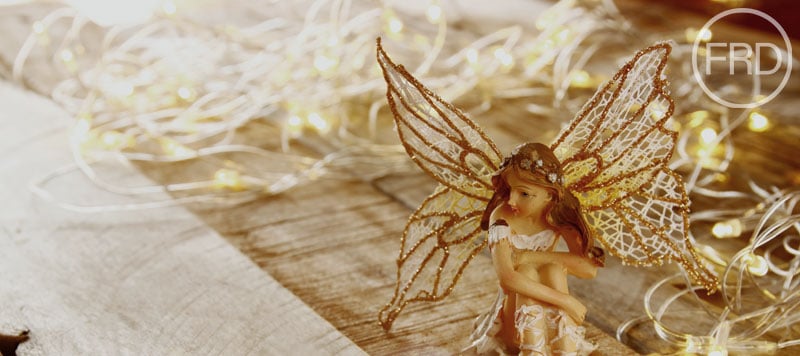When your child starts losing baby teeth, you know it’s time to introduce them to the tooth fairy and to your local children’s dentist to keep a check on their dental progress, that’s why we have specialist children’s dentists in Fulham at our warm and welcoming practice. It’s like an unwritten rite of passage for toddlers — braving the painful experience of losing their first baby tooth with the help of a tooth fairy and the reward that follows.
You probably went through that childhood phase of believing in the tooth fairy, too. It stirs up fond childhood memories equal to those of Santa Claus and the Easter Bunny. But even though children often lose their belief in the tooth fairy as they get older, the charm and mysticism revolving around this folklore continue to enthral even the older generation.
Let’s unravel the history of the tooth fairy and make visiting the children’s dentist with your kids more fun and exciting!
 How did the tooth fairy come to be?
How did the tooth fairy come to be?
The oldest historical writing related to the tooth fairy might be the Eddas, an ancient collection of texts containing Northern European traditions.
According to the Norse culture, children’s belongings, especially their teeth, were believed to turn the tides of battle and bring good luck to those who possess them. Scandinavian warriors in the olden times even hung necklaces made of teeth to boost their luck in battle. This was why they would even pay a tand-fe, or tooth fee, to collect baby teeth from children.
While a fierce and scary Viking warrior is a far cry from the glittery, winged tooth fairy in pop culture today, it was the start of the folklore of the tooth fairy and has evolved through generations.
In the Middle Ages, European believed that witches could place a curse on anyone as long as they had their teeth. Because of this, baby teeth were disposed of carefully, such as through swallowing, burying, or burning.
The current image of the kind tooth fairy might have originated from a fairy tale in 18th-century France called La Bonne Petite Souris. In this bedtime story, a fairy transforms into a mouse to help defeat an evil king. The mouse hid under the king’s pillow and knocked out all of his teeth, thus defeating him.
What does the tooth fairy really look like?
Unlike Santa Claus or Father Christmas, which is a character popularized and more or less standardized by countless movies, stories, and advertisements over the years, the image of the tooth fairy varies from culture to culture.
In North America, the tooth fairy is most often believed to look like a pixie, much like Tinkerbell, as influenced by pop culture. Some parents even sprinkle glitter by the children’s bed, depicting the pixie dust that fairies leave in their wake.

Other cultures have various depictions of the tooth fairy, ranging from birds and dragons to pot-bellied men and flying ballerinas. In pop culture, you can watch the tooth fairy in movies such as Toothless, Rise of the Guardians, The Tooth Fairy, and Darkness Falls. At the end of the day, what the tooth fairy looks like is totally up to children’s imagination.
What are the different traditions relating to the tooth fairy?
Aside from placing a baby tooth under the pillow, there are other rituals that children do in different cultures.
- Argentina – kids place their baby teeth inside a glass jar beside their bed. In the morning, their teeth will be replaced by coins or candies.
- Mexico – baby teeth are placed inside a box, and then a magical mouse will exchange the teeth for coins.
- Asian countries – in countries like China, Japan, Vietnam, and India, toddlers toss their baby teeth on the roof and wish that their new teeth will be straight and healthy.
- Afghanistan – children bury their baby teeth in a hole dug by a mouse, since rodents have strong teeth.
Other cultures have other practices like throwing baby tooth into the fire, throwing it between the legs, swallowing it, or putting it in a slipper. In all these traditions, children hope for material rewards such as money, candies, or toys, or wish that their new tooth will grow strong and healthy.
The tooth fairy is a dentist’s best friend…
Nowadays, parents tell the folklore of the tooth fairy to ease the anxiety of children losing their baby teeth. But aside from giving comfort to your toddler, you can use the legend of the tooth fairy to teach your kid about the rewards of good oral hygiene and regular visits to the dentist, this can be a way of incentivising children to become more confident in visiting the dental practice regularly.
For example, you can tell your kid that the tooth fairy will not give rewards for decayed teeth, or that the tooth fairy also secretly watches if they diligently brush their teeth every day, or that there will be bigger rewards for cleaner teeth. You can even invent your own tooth fairy game to spice things up and make your kid’s childhood more magical while instilling the importance of good dental hygiene.
Most importantly, regular visits to the dentist will surely please the tooth fairy! Losing a baby tooth can turn into a traumatic experience if children are not guided properly, so you can work hand-in-hand with your trusted paediatric dentist to make that experience fun for your kid.
If you’re in Fulham and looking for a paediatric dentist that can do wonders to your child’s teeth, then Fulham Road Dental is the place to go. What’s even better is that your toddler might just see a real-life tooth fairy in the form of their favourite dentist!

